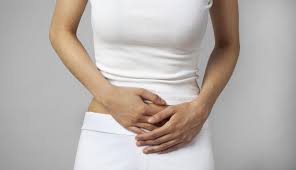
Endometriosis affects 10% of the population and occurs when endometrial cells that are normally inside the uterus start to grow outside of the uterus. These cells can grow anywhere in the body. Endometriosis has an unknown cause and cure but is thought to have a strong genetic link and may be something you are born with. Symptoms usually arise once a female starts her period (menses) therefore diagnosis takes 7-12 years from onset of symptoms.
Symptoms include heavy menstrual bleeding, severe cramping, pain (dysmenorrhea), sexual pain (dyspareunia) on penetration or deep during intercourse, trouble with putting on a tampon, bladder and/or bowel dysfunction, nausea, fatigue and lethargy.
The pelvic floor is a protective structure and when the above happens on a monthly basis over many years, the pelvic floor and pelvic wall muscles can repeatedly spasm to protect the area. This may result in poor muscle coordination (dyssynergia), altered motor control including a habitual gripping pattern of muscle activation and a reduced capacity to relax. Furthermore, high muscle tone (hypertonicity) may be present which may implicate the flexibility of the vagina. Other musculoskeletal symptoms may be outside of the pelvis, and which can also alter breathing patterns.
Young women suffering from this tend to have a number of missed days of school following through to their adult and work life.
Surgeons that specialise in endometriosis diagnose endometriosis by performing a laparoscopy and may need to surgically remove the growths or adhesions. Management in the early phase may consist of hormone therapy to help young women with their symptoms.
A Women’s Health Physiotherapist can help with reducing muscle tone, improve muscle control and hence reduce pain. Assessment and treatment may consist of education, internal manual therapy, the use of TENS, dilators and exercise prescription can help young women better manage their symptoms and improve quality of life.
More to come during MARCH Endometriosis awareness month.
